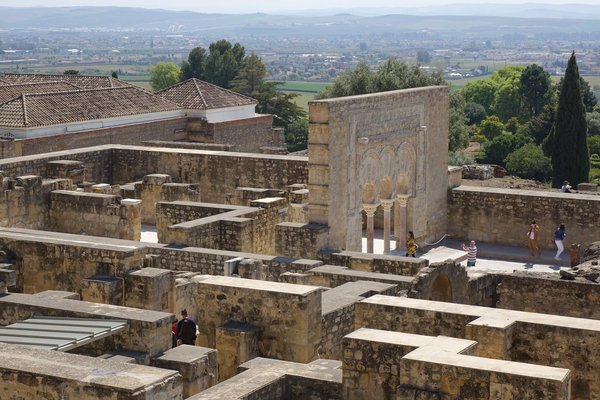Spain
Medina Azahara
The Caliphate City of Medina Azahara represents the urban planning of the 10th-century Umayyad caliphate in the Islamic West.
Medina Azahara is a ruined city, that lay undiscovered until the beginning of the 20th century. It was a palace-city built by the first Umayyad Caliph of Córdoba, as the symbol of his power. It served as the de facto capital of Al-Andalus. The city included ceremonial reception halls, mosques, administrative and government offices, gardens, a mint, workshops, barracks, residences and baths.
Community Perspective: It took a few years before it fully opened up to tourists – and the Rich Hall only has from Oct 2023 and is still unreviewed. The museum is excellent, but the remains in situ can be disappointing as they are either rubble or visible reconstructions. You have to take a (paid) bus to the archaeological site.
Site Info
Official Information
- Full Name
- Caliphate City of Medina Azahara (ID: 1560)
- Country
- Spain
- Status
-
Inscribed 2018
Site history
History of Medina Azahara
- 2018: Inscribed
- Inscribed
- 2015: Revision
- Formerly on T List as Medina Azahara, Cordoba (1998)
- Type
- Cultural
- Criteria
- iii
- iv
Links
- UNESCO
- whc.unesco.org
- Official
-
- museosdeandalucia.es — Museos de Andalucia: Conjunto arqueologico Madinat al-Zahra
- Related
-
- romeartlover.it — Private website that shows the outline of the site well
- andalucia.com — Madinat al-Zahra on Andalucia.com
All Links
UNESCO.org
- whc.unesco.org — whc.unesco.org/
Official Website
- museosdeandalucia.es — Museos de Andalucia: Conjunto arqueologico Madinat al-Zahra
Related Resources
- romeartlover.it — Private website that shows the outline of the site well
- andalucia.com — Madinat al-Zahra on Andalucia.com
News Article
- Nov. 3, 2023 andalucia.org — The Rich Hall at Medina Azahara, the jewel of this archaeological site, has reopened to the public on 1 October.
- Sept. 11, 2019 dainst.org — Monumental pillar hall discovered in Madinat al-Zahra
Community Information
- Community Category
- Archaeological site: Other
Travel Information
Recent Connections
-
Perfect Inscriptions
2018 -
Eunuchs
Young boys termed Slavs (Arabic Ṣaqālib… -
Moorish architecture
"Artistically, Medina Azahara played a …
Connections of Medina Azahara
- Geography
-
-
Guadalquivir River
Lies in the fertile plain of the Guadalquivir valley
-
- Trivia
-
-
Dubbed as another WHS
Versailles of the Middle Ages -
Twin Towns
With Cordoba: "Substantial political effectiveness was achieved by establishing these new cities within a short distance of the old centers that preceded them, following a Near Eastern tradition which was largely pre-Islamic. The examples of such twinned cities are multiple, on scales that are very diverse: besides the conurbation of Medina Azahara and Cordoba..." (AB ev)
-
- History
-
-
Umayyad Caliphate
The abandoned Caliphate City of Medina Azahara, being a new city planned and built as a state initiative, attests in an exceptional way to the Umayyad cultural and architectural civilization (OUV) -
Eunuchs
Young boys termed Slavs (Arabic Ṣaqāliba) in the Arabic texts were brought to Cordoba by the thousands to serve as palace eunuchs, . "The most lucrative slave market was the Islamic slavery in Al-Andalus. The Arabic Caliphate of Córdoba referred to the forests of Central and Eastern Europe, which came to function as a slave source supply, as the Bilad as-Saqaliba ("land of the slaves")." (wiki) - see link for Medina Azahara exampleSee en.wikipedia.org
-
Historical Food Remains
historical food remains (discovered in the sewage)
-
- Ecology
-
-
Liquid Mercury
The 11th C Andalusian poet and Jewish philosopher, Solomon ibn Gabirol, described how, at Madinat, "a pool full of quicksilver ..... was placed in a palatine room surrounded on each side by eight doors with ivory and ebony arches encrusted with gold and pearls and supported by colored columns with diaphanous glass. When al-Nasir wished to impress a visitor, he made a sign to one of his slaves to shake the mercury and the flashes that irradiated on the hall façade (‘maylis’), and inside, produced such displays of light that the audience was captivated and even had the impression that the building was taking flight together with those present as the quicksilver moved."
-
- Architecture
-
-
Medina
-
Moorish architecture
"Artistically, Medina Azahara played a great role in formulating a distinct Andalusian Islamic architecture (also referred to as "Moorish" architecture) ... The congregational mosque bears close resemblance to the Great Mosque of Córdoba ..., and replicated its rows of double-tiered arches. The horseshoe arch, which had also appeared in the Great Mosque of Cordoba already, became further ubiquitous in Madinat al-Zahra and consolidated its distinctive form... The extensive arabesque decoration, carved in relief across many wall surfaces, demonstrate historic influences from Sassanian and Abbasid Iraq, but also notable differences in its details. The basilical royal reception hall, as seen in the Salon Rico, is another distinctive creation here which became a distinctive feature of palace architecture in this region, as it contrasted with the domed and vaulted halls found in the eastern part of the Islamic world... The Lower Garden and Upper Garden of Madinat al-Zahra are the earliest archeologically-attested examples of a symmetrically-divided garden in the western Islamic world, and among the earliest examples in the Islamic world more generally." (wiki)See en.wikipedia.org
-
- World Heritage Process
-
-
Perfect Inscriptions
2018
-
- Religion and Belief
-
-
Legends and Folk Myths
Popular legend holds that the Caliph named az-Zahra, or Azahara, after his favorite concubine, and that a statue of a woman stood over the entrance. (wiki) -
Notable mosques
Mezquita (mosque) Aljama
-
- Human Activity
-
-
Irrigation and drainage
"the section of the old Roman aqueduct now diverted was used as a main sewer for a highly complex system of small channels carrying away rain and waste water. Many food and ceramic remains have been found here." Wiki -
Mints
the city included ceremonial reception halls, mosques, administrative and government offices, gardens, a mint, workshops, barracks, residences and baths (wiki) -
Man-made Terraces
To construct the buildings on different terraces, the mountainside had to be specially prepared. The bare rock was cut and the foundations filled in with the resulting stone blocks to create a wall, and then on the outside, the foundations were filled in and supported by thick retaining walls. (AB ev)
-
- Constructions
-
-
Historical Zoos
literary sources indicate the presence of amenities such as a zoo (AB ev) -
Baths
the city included ceremonial reception halls, mosques, administrative and government offices, gardens, a mint, workshops, barracks, residences and baths (wiki) -
Aqueduct
aqueduct (the Roman aqueduct was used as sewage)
-
- WHS on Other Lists
-
-
Aga Khan Award for Architecture
Madinat al Zahra Museum (2008-2010)See www.akdn.org
-
Europa Nostra Award
Casa de Ya’far (diploma 2004) -
European Museum of the Year Award
Madinat al-Zahra Museum (2012)
-
- Timeline
-
-
Built in the 10th century
Medina Azahara was a new city built in open country from 940 CE (AB ev)
-
- WHS Hotspots
- Science and Technology
-
-
Archaeological potential
"Only about 10 hectares of the 112 hectares (0.43 sq mi) of the city have been excavated and partially restored" (wiki) -
Recorded cultural discoveries
"With time the entire city was buried, not to be unearthed until 1911." Wiki
-
News
- andalucia.org 11/03/2023
- The Rich Hall at Medina Azahara, t…
- dainst.org 09/11/2019
- Monumental pillar hall discovered …
Recent Visitors
Visitors of Medina Azahara
- 2Flow2
- Adam Hancock
- Adolfo
- Adrian Turtschi
- Alberto Rodriguez Gutierrez
- aleserre
- alex
- Alexander Lehmann
- Alikander99
- AmyAbroad
- Anna Wludarska
- Antonio J.
- Argo
- Astraftis
- Atila Ege
- AYB
- Bill Maurmann
- Birgitte Sørensen
- Caspar
- CeeMon
- Chinmaya
- Christoph
- Christravelblog
- Clyde
- CugelVance
- cwthong
- Dani Cyr
- Daniela Hohmann
- Daniel Chazad
- Danieljbromberg
- dankir
- David Berlanda
- Dimitar Krastev
- Dimitrios Polychronopoulos
- DL
- Dorejd
- Doubanjiang
- Dwight Zehuan Xiao
- edstar500
- Elaine McArdle
- Els Slots
- Erik Jelinek
- Eva Kisgyorgy
- Evgenii
- Fan Yibo
- Farinelli
- Feldhase
- Felicité
- Femke Roos
- Filip Murlak
- Frederik Dawson
- FS
- GeorgeIng61
- Harald T.
- Harry Mitsidis
- Hubert
- Ivan
- Ivan Rucek
- Jaakkotoivanen
- Jakob F.
- Jana and Matt
- Janina Lehmann
- Janos
- Jarek Pokrzywnicki
- Jasam
- Javier
- Jean Lecaillon
- Jeanne OGrady
- Jesse S 2010
- Jezza
- Jonas Kremer
- Jonas Martinsson
- Ken DJ
- Klaus Freisinger
- Krzysztof B
- Linz
- Lisu Marian
- Loic Pedras
- Luboang
- Lucio
- Luis Filipe Gaspar
- Lukasz Palczewski
- Maciej Gil
- Manuelfunk
- marc Rouserez
- Martin
- Martina Rúčková
- MH
- M. Huineman
- Mikan22
- Mikko
- MoPython
- Msarmiento1979
- nan
- Nick M
- Nihal Ege
- nikolamus
- Nolan B.
- PabloNorte
- Paola Laura
- Patrik
- Patrik_globe
- Persian Globetrotter
- Peter Lööv
- Philipp Leu
- Philipp Peterer
- Porcho
- Priyaranjan Mohapatra
- Purrfect
- Randi Thomsen
- Reza
- Rick Ohm
- Roel Sterken
- rogerding
- Roger Ourset
- Roman Bruehwiler
- Rudegirl
- Samy G
- Sandmann15
- scubarrie
- SDMArado
- Sergio Arjona
- sibariam
- Simonf
- Solivagant
- Squire Sullen
- Ssong.x
- Stan
- Stanislaw Warwas
- Stijn
- streliorsi
- Svein Elias
- Szucs Tamas
- Tamara Ratz
- Taotao Chen
- Tarquinio_Superbo
- Thomas Buechler
- Thomas Harold Watson
- Thomas van der Walt
- Tim Allen
- Tom Flaten
- triath
- Vanessa Buechler
- Velvetlapis
- Viaje al Patrimonio
- Vincent Cheung
- voyager
- Walter
- Westwards
- Wojciech Fedoruk
- Wo_ko
- wolfboy
- wrung24
- Xiong Wei
- Yongcheng Liu
- Zoë Sheng
- Zos M
- ZZSong
- Александар Стојиљковић
Community Reviews
Show full reviews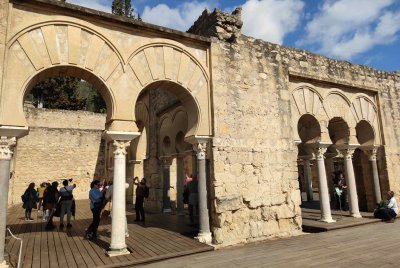
I was pretty underwhelmed with this site during my March 2025 visit (apparently just days after Alikander99 was there!) but I believe this is because I did not hire a guide.
There is a bus that runs twice a day up to this site from Córdoba (a WHS site in its own right) and it drops you off at a museum where you begin by watching a amateurly-animated (probably by a university group at some point), but very informative video in a small theatre. After the movie ends, you are released into the proper museum that they have with plaques, and artifacts, and the like. This part is great, I recommend the museum!
After the museum you take a second bus up to the actual archealogical site itself. This, sadly, is where things take a downturn. The archealogical site is decently large, but there is no signage whatsoever letting you know what anything is that you are seeing, unless you happen to have a photographic memory of what you read in the museum. I'm okay with keeping a site "preserved" by not having signs, but there should be some way to communicate to people what they're looking at, otherwise it's just a bunch of ruins. If you didn't book a private tour through a third-party company, the only way to know what you're looking at is through a barely-advertised audio guide app that is shared by lots of different sites in the world, and does not …
Keep reading 0 comments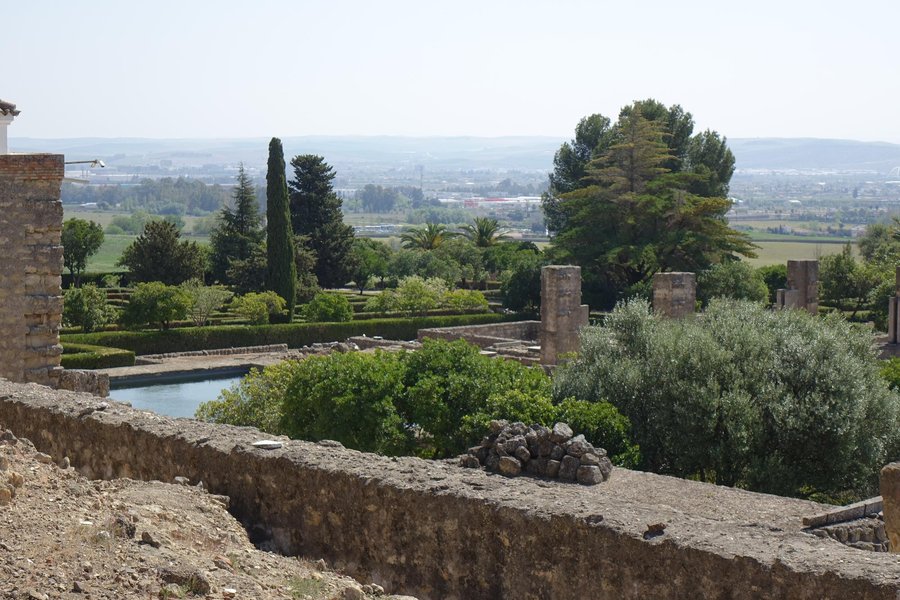
Well, unfortunately I missed the short window to visit the salon rico, so I won't be adding much new to the fray.
This is a rather polarizing site, with some ultimately disregarding it, while others give it a passing score.
Now that I've visited I understand why. The site itself is poorly preserved, and as pointed out there are some rather terrible past reconstructions standing in the park.
At the same time however, the site has, I think, a lot of unfulfilled potential.
First thing we have to remember is that the city is from the late 10th century. Its state of conservation is not that bad once you take into account its age.
Second thing, people romanticize moorish architecture. For all its wonderful decoration the architecture itself is rather pedestrian and simple. Almost all buildings in the style are basically reinterpretations of relatively short hypostyle rooms with wooden ceilings. This means they age notoriously bad and make for very boring ruins. So walking through Medina azahara is rather...unimpressive.
The good part about this is that technically the museum has the decoration, it's just mostly sitting in boxes. And the plan (mor on "the plan later) is to reinstate much of it.
I honestly think that just giving the visitor a rough idea of how the buildings looked in situ (perhaps a visual aid, or well differentiated reconstruction) would improve the experience a lot.
Now the issue is that Medina azahara is …
Keep reading 0 comments
Medina Azahara must have been a wonder of the age: a palace city, splendid rooms with precious ornaments with no equal at the time, at least in Europe. So, expectations can be high for an unprepared visitor, but what do you get to see? I nice museum with small finds and scraps of ornaments and explanations about the palace city. When you get on the bus to the excavations (beware: they do run only about every 20 minutes and lines can be long so you may miss one) it is not much more then empty ground walls and a few very heavily restored arches. They say it is only 10 percent of the original palace city, but it seems to be the central area and there is no reason to assume further excavations would be better preserved. While this is an interesting visit it is certainly not a must compared to the center of Cordoba and its nice Archeological Museum. This seems to be very much inscribed for what it was and represented at the time rather than for what is left today. As an extension of Cordoba, it would add a small facet to this WHS but if we are reasonable, on its own it lacks any OUV and should not have been inscribed.
Keep reading 0 comments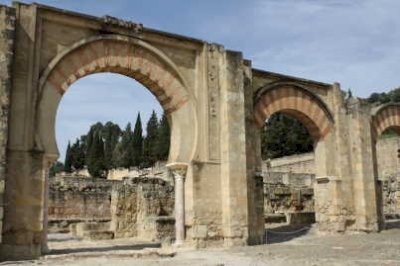
March 2017 - having visited the mezquita of Cordoba that morning it is spmewgat depressing to see ruins of a city, that was probably just that beautiful. We thought of Mdina Azahara as an Extension of the WHS, but luckily we visited anyway.
It is overwhelming, what has been built here for visitors. A giant Museum with a High amount of artefacts is welcoming you. EU visitors are paying less, lucky us:) Bus Shuttles are bringing you to the ruins.
You can walk in and between the ruins which brings you closer to the past than just looking at them. And you are free to take your time. The views were very nice and some of the ruins are still well preserved so you can imagine well how it must have been 1100 years ago. A nice visit, very close to.Cordoba
Keep reading 0 comments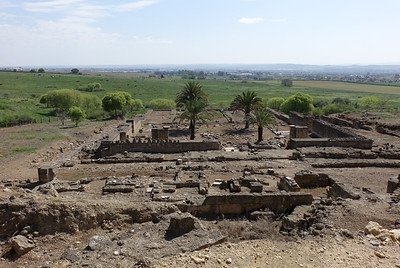
Spain’s Medina Azahara won its WH status as recently as 2018 (after having been on the Tentative List for 3 years). It wasn’t a well-known destination before that, as can be read from the previous reviewers on this website who all visited a few years earlier at most. The site has been excavated from 1910 on and has been a Spanish national monument since 1923, but the real boost in visitor numbers came after the opening of the award-winning on-site museum in 2009. When I visited, on a Saturday in late March 2019, there were literally hundreds of visitors around and the overflow parking lot was in use. A significant part of the daytrippers consisted of Spanish Muslims.
Somehow not everything adds up here regarding visitor management: strapped for cash some restorations like the one of the Rich Hall have slowed down, but there still is no entrance fee charged. Other prominent Andalusian landmarks such as the Alhambra and Cordoba’s mosque-cathedral cost 14 and 10 EUR respectively. So why does Medina Azahara not profit financially from the high visitor numbers? The only paid aspect is the bus ride to the archaeological site, but this money seems to go directly to the bus company.
Nevertheless, the visit is worthwhile and I spent about 2.5 hours at the site. The museum is an attraction in itself. I especially liked the glazed ceramics with their green and manganese decorations (I had to look that last one up – it’s a metal). …
Keep reading 0 comments
On a trip to Córdoba and Granada a few years ago, I visited the ruins of Medina Azahara (Madinat al-Zahra), about 8 km to the west of Córdoba (there are trips organized by the tourist office). The Caliph of Córdoba had this palace town built in the 10th century, but it only lasted a few decades. Only a fraction is excavated, but it is a fascinating archaeological site to visit and walk around in, and there is a very interesting museum. It could have been inscribed as an extension of the Córdoba WHS, but considering its great archaeological potential, it’s just as well that it is a separate site. When I was there, there was talk of a problem with a kind of shantytown nearby that authorities thought would dissuade UNESCO from inscribing the site (although I didn't see any and there was certainly none in the immediate vicinity).
Keep reading 0 comments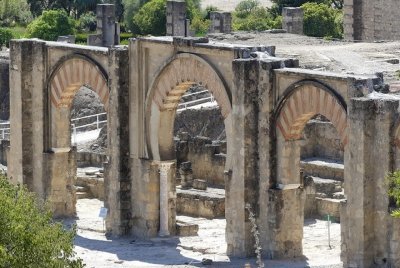
I visited this tentative WHS (aiming for inscription shortly) as a side trip from Cordoba in September 2017. The view from above (just before the entrance) was the highlight of my visit together with the museum. The closer you get to what is left the more you notice the reconstruction work and the OUV (if any) of the what remains gradually subsides. The site's importance in Islamic architecture and its OUV in terms of what it once was would make it a worthy extension to the WHS of Cordoba but in my opinion it does not deserve to be inscribed on its own.
Keep reading 0 comments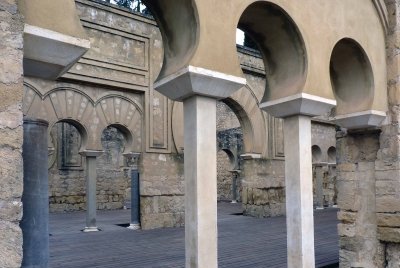
We visited this “about-to-be-inscribed” T List site in May 2018 and arrived at much the same conclusions about it as Zoe has since reported. Having viewed several recent TV programs which had included it, we had great hopes, but in the end it disappointed - the "on show" reality doesn't live up to the "vision" (partly because of the way it was presented) even if you try hard to add your own imagination. The Museum, however, is excellent, both architecturally and in terms of its contents - we probably gave it as much time as the site.
Entrance to the museum and site is, in theory, free only to EU citizens (but only Eur 1.50 otherwise). We were asked our nationality and this was recorded by the desk clerk. The entrance hall contains a number of (open and unused) guichets as if there was/is an intention at some time to charge more general entry fees. We asked if the impending inscription might mean that charges for all would be introduced and were told that the management hadn’t decided yet. The bus costs Eur 2.50 return with a reduction to 1.50 for “jubilados”. The road up to the site IS public and turns off to a restaurant and the monastery of San Geronimo a short way before the small site car park which is blocked by an electronic barrier which only staff and buses can open.
The naming of the site as it is to be inscribed has been …
Keep reading 0 comments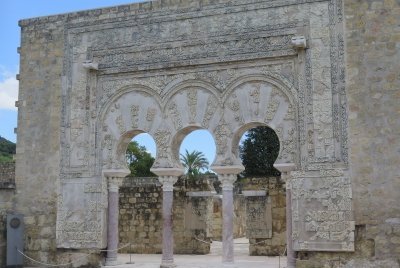
This place used to be an ancient city in the styles one can see at the Alcazar in Sevilla but rather than "just" a palace or building the area was an entire town with garden built strategically into the slope of the mountain. Having said that the ruins don't seem as massive as it sounded like beforehand and the big importance of the site as seen in the video is not very evident.
To reach the site you need to get to the outskirts of Cordoba. The museum is at the parking lot and free for EU citizens (there was no ID check so maybe they go by accent or trust? I.e. hide your American accent and seem trustwurthy, or just fork out whatever they ask for.) Inside you watch a prerendered CGI movie about the history of the city and it's daily ongoings. It prepares you for what you are about to see up the hill, kind of.
There is a regular bus that takes you to the museum but it is not free. I guess you could walk up the hill for free but you definitely cannot drive up there in your own car. I find that a little odd because they could easily fit a parking space nearby or at least closer than where it is now.
The site itself is poorly signed. The directions of the paths are even misleading. I love the standing arches and took a lot of pictures here but …
Keep reading 0 comments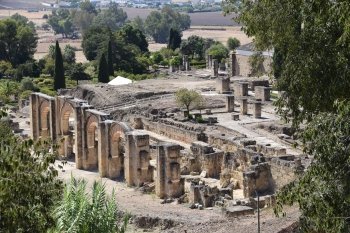
After the WHS-gettogether in September 2017 we had a Sunday drive ending in Cordoba where we spent the night. When leaving for Malaga airport we decided to make the detour of 8 km to the archeological site of Madinat al-Zahra. It was Monday and we knew the museum and the site itself was closed, but we defied that. It is a former city - something must be possible to see!
We arrived just after noon and the museum parking lot was empty and the museum closed as expected. We looked for signs to archeological site – but there were none. Anyway we chose the most likely direction and drove – and in 5 minutes we discovered something that we agreed had to be the Madinat. It was slightly uphill so we got a nice view and with the camera lens we got a couple of nice pictures.
We could see no city, but building-structures and arcs that still are standing upright tells some of the story of what it has been. The site is the capital of the caliphate Abd al-Rahman III founded in 940, abandoned in 1010, then slowly buried in a meadow. By the years it turned into a myth of a faraway western point of Islam, then revealed in 1911.
We got the overview, but missed the archeological details. When it becomes a true world heritage site we have to revisit this place.
Keep reading 0 comments
